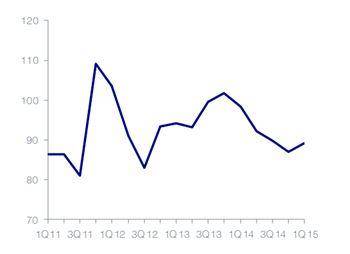Chemical Shipping Fortunes Lifted by Swing Ships
Chemical shipping faces another tough year, but prospects are improving thanks to the strength of the product tanker market which is attracting a growing number of swing ships out of chemicals into products, according to the latest edition of the Chemical Forecaster, published by global shipping consultancy Drewry.
Drewry estimates that seaborne trade in chemicals (including vegetable oils and fats) was stagnant in 2014 and is forecast to grow at less than 2.5% pa over the next few years. However, this year the fleet is expected to grow by as much as 9% to reach 101 million dwt by the end of 2015, placing at risk operator’s vessel utilisation and earnings. But the relative strength of the product tanker sector is likely to attract more swing ships out of chemicals shipping, so checking effective fleet growth.
“Given the strength of the product sector, we expect more ships to enter this segment than chemicals,” said Drewry’s Lead Analyst for Chemical Shipping Hu Qing. “So the growth in the fleet actually trading in chemicals and related products is expected to be lower at just under 7% this year. This is below our earlier estimates and hence we are more optimistic about the short-term market prospects.”
Drewry estimates that less than 40% of the total chemical capable shipping fleet is presently trading in chemicals and related products. And the proportion is expected to remain below this threshold over the next few years. Only three years ago over 46% of the fleet was trading in chemicals, representing a notable decline.
“The gap between tonnage carrying chemicals and tonnage carrying petroleum products is widening because of the number of larger ships entering the trades. The trend will continue over the next few years,” added Qing.
In some cases, the decision to move out of chemicals is an enforced one, as comparatively large numbers of ships continue to lose IMO Certificates of Fitness to carry chemicals and related products. In the first four months of 2015 alone, Drewry recorded 60 tankers either losing or not renewing IMO Certificates of Fitness, compared to just 11 vessels that have been moved from the feet through demolition, conversion and total loss.
Looking further ahead, other factors have the potential to curtail vessel supply growth, including shipyards failing to meet scheduled delivery dates and one particular case of bankruptcy.
“As such, slippage and outright cancellations through bankruptcy point to lower fleet growth than the headline numbers suggest,” observed Qing. “As a result, fleet growth is expected moderate over the medium term which bodes well for chemical shipping operators.”














